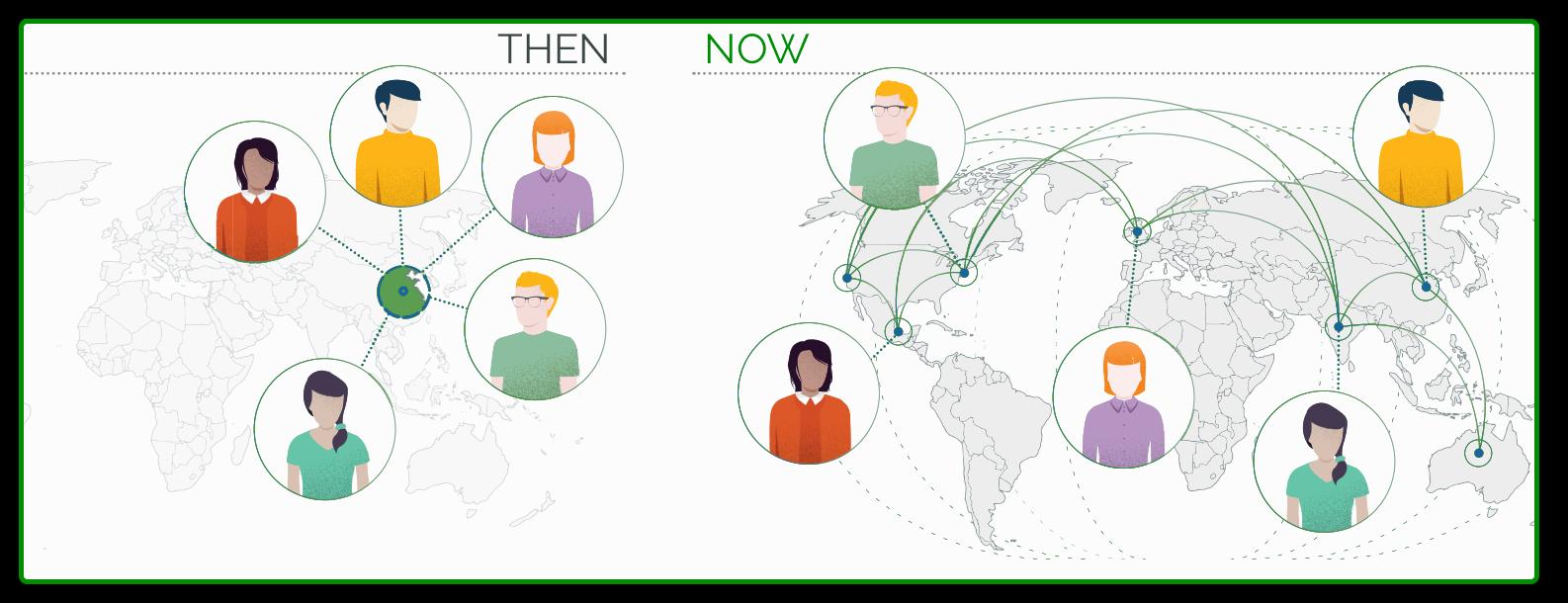
5:04
Until relatively recently, it was difficult for product developers to collaborate with teams outside of their departments with their designs. Large workstations took advantage of on-premises, file-based systems.
These workstations offered significant means for engineers to explore many exciting designs. As powerful as these tools were, there were still limitations that introduced inefficiencies and sometimes wasted time and money.
But with greater use of cloud computing, especially with Onshape and other cloud tools, teams can engage and collaborate in ways that were previously unimaginable.
At my previous company, I saw this change firsthand with the promise of agile product collaboration .
Product Collaboration Before the Cloud

I started my career in the late 90s. This organization had a strong engineering culture and an innate drive for continuous improvement, product collaboration, and learning. To achieve this, a high level of integration was necessary, such as in-house tools and resources.
I remember constantly popping up among the landscape of cubicles to see who could help me constrain a sketch or build a model. As a result, my skills improved and I quickly became able to contribute and collaborate with the rest of the team. These new skills came in handy as the company had many highly integrated systems.
The company was not only structured vertically in terms of manufacturing and the necessary subsystems but also in analysis and tooling. We also had many prototyping tools, testing, research, procurement, product management, sales, and other stakeholders in the same building.
They were all under one roof! All within a few steps, feedback was available with a quick phone call or a short walk making agile product collaboration in-person somewhat efficient.
We could bring a design or call them to our workstations to review a CAD model. We held mini-design reviews without any other technical challenges, updated parts, and assemblies to make them more manufacturable, and took many cost avoidance measures.
We engaged product managers and sales teams to exchange feedback on features and designs. The industrial designers were across the hall to negotiate clearances and allowances to maintain aesthetic intent and maximize functionality.
It may seem obvious, but our leadership at this company was motivated to integrate teams as integrated as possible. This often cost time, but saved rework because of manufacturability or misunderstandings around customer requirements.
The results were better designs, but the penalty was more time coordinating collaboration via design reviews or clumsy file management.
But as we started product collaborating with our partner suppliers, syncing hundreds of MB of data across two CAD systems hundreds of miles apart was challenging. We had to send CDs with STEP files in the mail to get data transferred. Changes were being made at both organizations to advance the design. Reconciling design updates would be time-consuming.
Then some manufacturing became decentralized and off-shored. Engineers had to invite suppliers to private FTP sites to collect parts, assembly and drawing files. These partners would use these files for tooling, assembly instruction and inspection.
Occasionally these suppliers would make changes in good faith to make the products manufacturable. Sometimes, these changes happen fast to maintain deadlines. While these changes happened quickly, they were not done with an understanding of all consequences. Components were swapped, hole sizes were adjusted or other substitutions were made resulting in new problems to be solved.
The time spent on integrating was no longer enough to keep the high level of streamlined workflows we came to expect.

A New Tool for Agile Product Collaboration
The world changed when we were introduced to Onshape. Product collaboration became normal again regardless of proximity, manufacturing was empowered to offer feedback, and onboarding new employees to CAD became easier.
These systems were tested when we were all sent home to work remotely in early 2020. We used our spare bedrooms, garages and basements to work together using Onshape’s unique cloud-native platform to find robust workflows to achieve product deliverables faster.
For example, collaborating with suppliers to get tooling feedback, safety certification personnel to ensure safety, quality assurance teams to review reliability, and product managers to check specs and aesthetics.
This was done primarily using Onshape’s sharing, comments and tasks features. These exclusive to Onshape tools allowed fewer changes before tooling commenced and no changes after it had finished. Additionally, there were fewer issues found in our performance and reliability testing. As a result, we were able to come to market earlier.
The duration of this remote work was longer than expected. New employees were being onboarded.
There were two categories of new users for us during these unprecedented times:
- Brand new CAD users, and
- Seasoned veterans that had not used Onshape.
Both types were either in our same time zone and geography or a different continent and time zone. The approaches for all users were very similar, with some important differences.
The Learning Center created by Onshape is a proactive approach to training for all users. Some pathways align mindsets for experienced CAD users to highlight the differences between traditional file-based CAD and Onshape’s one-of-a-kind cloud-native architecture.
Some dig a little deeper into CAD basics to help new users succeed. We also took advantage of follow mode for both types of users, which allows you to see your collaborator’s screen in real-time.
With both of you looking at the same thing simultaneously, it's easy to point out features or discuss the model without sending emails back and forth with screenshots.
Transforming Product Development
Becoming agile in product collaboration tools was not an option with the technology available over 20 years ago. However, now the benefits of being able to work with agile workflows will allow businesses to continuously improve their workflows.
As the way we do business changes at a quicker pace every year, setting up your team with the resources, tools and workflows necessary for success is imperative. Cloud technologies allow for greater scalability and integration with other SaaS tools, which will allow you and your business to quicken innovation and build business resilience.
See what Onshape can do for your product development business with a free Professional trial.
Try Onshape Today
Head to our sign-up page to choose the right CAD plan for you and your team.
Latest Content

- Case Study
- Industrial Equipment & Machine Design
Reframe Systems: Transforming Homebuilding with Digital Automation and Cloud-Native Onshape
09.25.2025 learn more
- Blog
- Aviation, Aerospace & Defense
- Branching & Merging
- Custom Features
- Learning Center
- Onshape Government
Why Aerospace & Defense Teams Choose Onshape for Product Development
12.18.2025 learn more
- Blog
- Evaluating Onshape
Cloud-Native CAD 2025 Wins: Revenue Growth, Real-Time Collaboration, Unified CAD-CAM
12.17.2025 learn more
- Blog
- Becoming an Expert
- Assemblies
- Simulation
Mastering Kinematics: A Deeper Dive into Onshape Assemblies, Mates, and Simulation
12.11.2025 learn more



